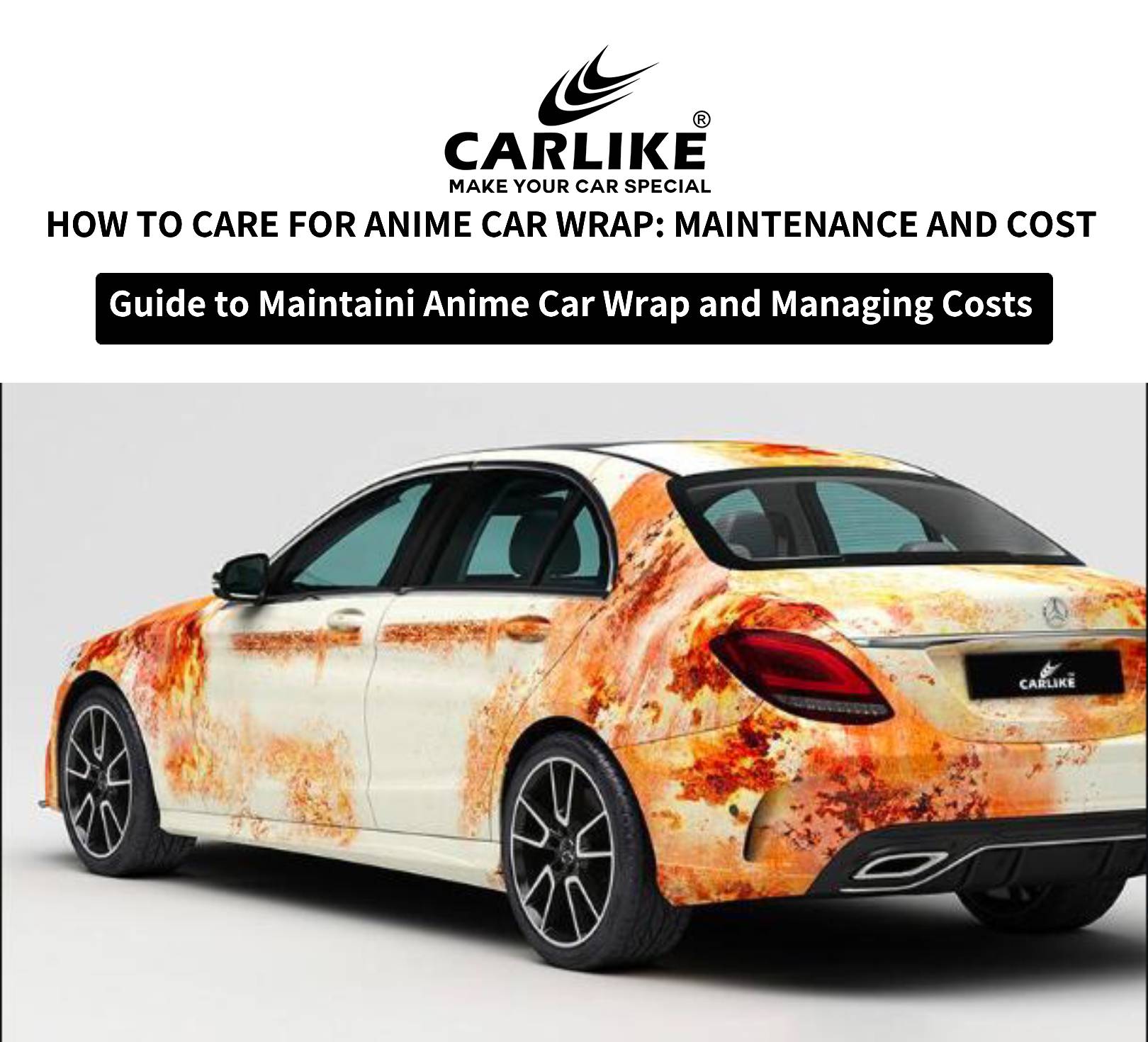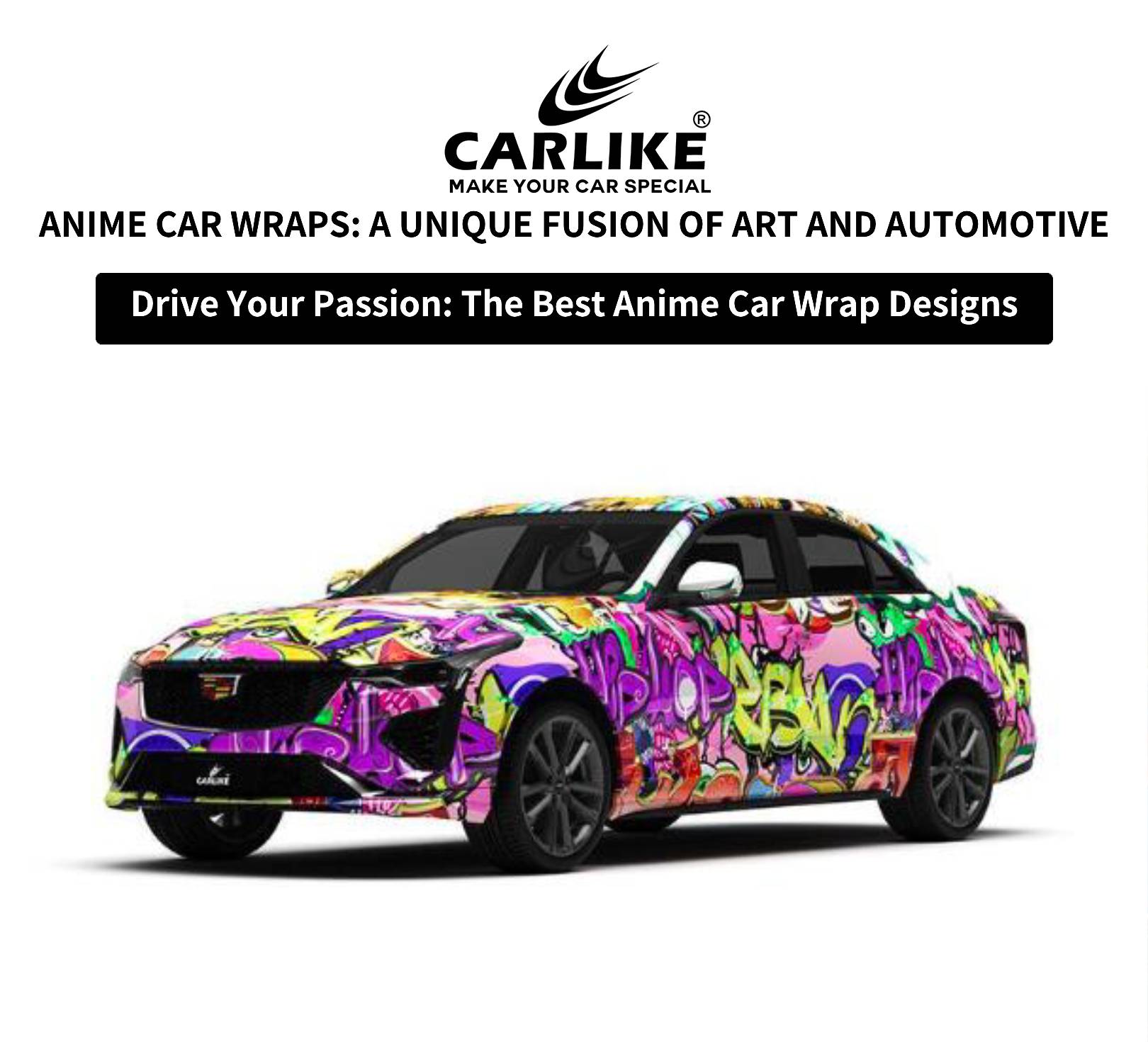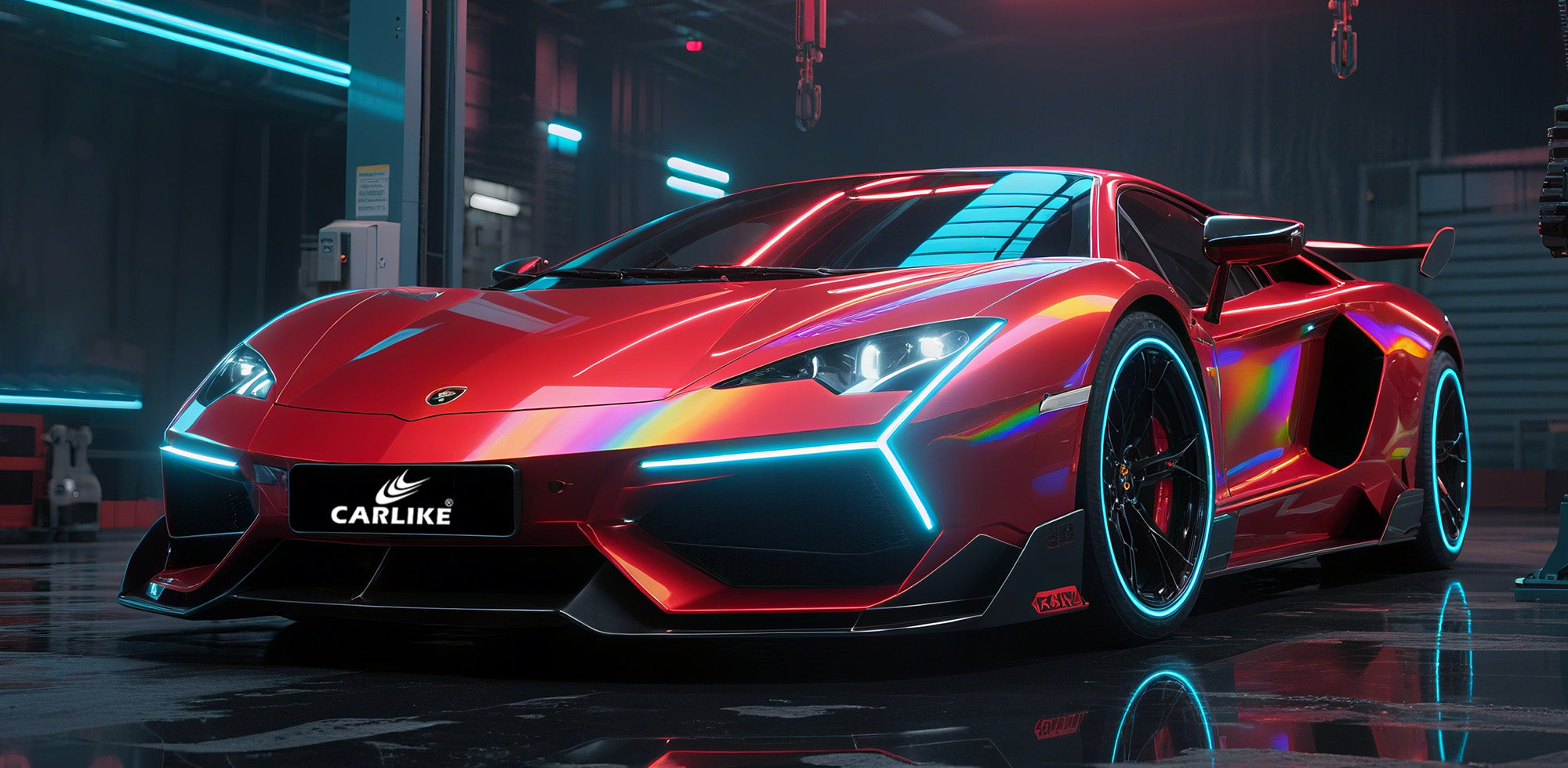CUSTOMIZED WRAPS
Customize your own car
Premium+ colored printed customized graphics car vinyl wraps
Epson high-precision printing
Customized by car model
Multiple colors with gloss or matte surface
The Process of Designing Your Anime Wrap
Step 1: Conceptualization and Theme Selection
The first step in creating a custom anime film design is to brainstorm and select a theme. This involves:
- Choosing Your Anime Theme : Decide on a specific anime or a combination of characters, scenes, and elements that you want to feature. Consider your personal preferences and the overall aesthetic you aim to achieve.
- Gathering Inspiration : Collect images, fan art, and references from the chosen anime to help visualize the final design.
Step 2: Selecting High-Quality Images
Quality is crucial when it comes to the images used in your wrap. Ensure that:
- Image Resolution : Use high-resolution images to maintain clarity and sharpness when the wrap is printed and applied.
- Licensing and Copyright : Verify that the images are licensed for use to avoid any legal issues.
Step 3: Customizing Colors and Patterns
Personalize your wrap by:
- Color Schemes : Choose colors that complement your car's style and the anime theme.
- Patterns and Textures : Incorporate unique patterns and textures that enhance the design and make it stand out.
Collaborating with Graphic Designers or Wrap Specialists
Finding the Right Professional
Working with an experienced graphic designer or wrap specialist can make a significant difference in the quality of your wrap. Steps to collaborate effectively include:
- Researching Designers : Look for designers who specialize in vehicle wraps and have a portfolio showcasing their work with anime or similar styles.
- Initial Consultation : Discuss your vision, preferences, and budget with the designer to ensure they understand your goals.
The Design Process
Once you've selected a designer:
- Concept Development : The designer will create initial sketches or digital drafts based on your theme and ideas.
- Feedback and Revisions : Review the drafts and provide feedback. Collaborate closely to make necessary adjustments until the design meets your expectations.
- Final Approval : Once satisfied with the design, give your final approval to move forward with printing and installation.
Software and Tools Used for Designing and Previewing the Wrap
Graphic Design Software
Graphic designers use advanced software to create and refine wrap designs, including:
- Adobe Illustrator : Ideal for creating vector graphics, which are essential for scaling the design to fit different vehicle sizes without losing quality.
- Adobe Photoshop : Useful for editing images, adding effects, and creating complex compositions.
3D Visualization Tools
To preview how the wrap will look on your car, designers use:
- Wrap Software (e.g., 3M Visualizer or Avery Dennison’s Wrap Visualizer) : These tools allow designers to apply the wrap design to a 3D model of your car, giving a realistic preview of the final result.
- Blender or Autodesk 3ds Max : These advanced 3D modeling tools can be used to create detailed visualizations and animations of the wrap on your car.
Final Steps
After the design is finalized and approved, the next steps involve:
- Printing the Wrap : The design is printed on high-quality vinyl wrap material using specialized printers.
- Installation : A professional installer applies the wrap to your car, ensuring a smooth, bubble-free finish.
Preparing Your Car for the Wrap
Properly preparing your car's surface is crucial for a successful vinyl wrap application. A smooth, clean surface ensures the wrap adheres correctly and looks flawless. Here are the detailed steps to prepare your car:
Step 1: Cleaning Your Car
A thorough cleaning is the first step to prepare your car's surface.
- Washing the Car : Start by washing your car with a high-quality automotive soap and water. Use a microfiber cloth or sponge to avoid scratching the paint.
- Degreasing : After washing, use a degreaser to remove any oil, grease, or wax residues. Products like isopropyl alcohol (IPA) or specialized automotive degreasers work well.
- Drying : Dry your car completely using a microfiber towel. Ensure there is no moisture left on the surface, as water can interfere with the adhesive.
Step 2: Removing Old Wraps or Decals
If your car has existing wraps or decals, they need to be removed before applying the new wrap.
- Heating the Wrap/Decals : Use a heat gun or hair dryer to gently heat the old wrap or decals. This softens the adhesive, making removal easier.
- Peeling Off : Carefully peel off the old wrap or decals, starting from one corner and pulling slowly to avoid tearing.
- Adhesive Removal : After removing the wrap or decals, there may be adhesive residue left on the surface. Use an adhesive remover to clean these residues. Wipe the area with a clean cloth to ensure no adhesive remains.
Step 3: Repairing Any Surface Damage
To achieve a smooth finish, any surface imperfections must be repaired.
- Inspecting the Surface : Thoroughly inspect your car's surface for dents, scratches, or rust.
- Fixing Dents and Scratches : Use body filler to repair dents and deep scratches. Sand the area smooth once the filler has cured.
- Treating Rust : If there are any rusty areas, sand them down to bare metal, treat with a rust inhibitor, and then prime and paint the area.
- Sanding and Smoothing : Sand the entire surface with fine-grit sandpaper to ensure it's smooth. This step is crucial for the wrap to adhere properly and look seamless.
Step 4: Final Cleaning and Inspection
A final cleaning ensures the surface is perfectly clean and ready for wrapping.
- Final Wipe Down : Wipe down the entire surface with a mixture of 70% isopropyl alcohol and water. This removes any remaining dust, oils, or contaminants.
- Tack Cloth : Use a tack cloth to remove any fine particles left on the surface.
Importance of a Smooth and Clean Surface
- Adhesion : A clean and smooth surface allows the vinyl wrap to adhere properly, preventing bubbles and lifting edges.
- Appearance : Surface imperfections such as dirt, grease, or scratches can show through the wrap, affecting the final appearance.
- Durability : Proper surface preparation ensures the wrap lasts longer and withstands environmental conditions better.
Installation Process
Step 1: Gathering Materials and Tools
Before starting the installation, ensure you have all the necessary materials and tools:
- Vinyl Wrap : High-quality vinyl wrap film with the desired design.
- Squeegee : A tool with a felt edge to smooth out the vinyl.
- Heat Gun : For heating the vinyl to make it more pliable.
- Utility Knife : For cutting excess vinyl.
- Application Gloves : To handle the vinyl without leaving fingerprints.
- Tape Measure and Ruler : For precise measurements.
- Masking Tape : To hold the vinyl in place.
- Cleaning Supplies : Isopropyl alcohol, microfiber cloths, and tack cloth.
- Wrap Magnets : To hold the vinyl in place during positioning.
Step 2: Prepping the Workspace
- Environment : Ensure you work in a clean, dust-free, and well-lit environment. The ideal temperature for applying vinyl is between 60-80°F (15-27°C).
- Surface Preparation : Make sure the car's surface is clean, smooth, and free of any contaminants as detailed in the preparation steps.
Step 3: Positioning the Vinyl
- Initial Placement : Position the vinyl wrap on the car, aligning it with the area to be wrapped. Use masking tape or wrap magnets to hold it in place.
- Checking Alignment : Double-check that the design is properly aligned and covers the intended area.
Step 4: Applying the Vinyl
- Peel and Stick : Peel back a small portion of the vinyl's backing paper, starting at one corner. Carefully stick the exposed vinyl to the car's surface.
- Squeegeeing : Use a squeegee to press the vinyl onto the surface, working from the center outward to push out any air bubbles. Apply even pressure to ensure a smooth application.
- Heating : Use a heat gun to warm the vinyl, making it more pliable and easier to conform to curves and edges. Be careful not to overheat, as this can damage the vinyl.
- Stretching and Smoothing : Gently stretch the vinyl to fit complex curves and edges. Continue using the squeegee to smooth out the vinyl as you work.
Step 5: Trimming Excess Vinyl
- Cutting : Use a utility knife to trim any excess vinyl around the edges. Ensure clean cuts by keeping the knife blade sharp.
- Sealing Edges : Heat the edges with a heat gun and press them down firmly to ensure they adhere properly and prevent lifting.
Step 6: Finishing Touches
- Post-Heating : Once the vinyl is fully applied, use a heat gun to post-heat the entire surface, especially around edges and curves. This helps set the adhesive and ensures a long-lasting bond.
- Final Inspection : Inspect the wrap for any remaining air bubbles or imperfections. Use a pin to carefully pop any stubborn bubbles and smooth them out with the squeegee.
Tips for a Bubble-Free and Smooth Application
- Work Slowly : Take your time during each step to ensure precision and avoid mistakes.
- Use a Tack Cloth : Frequently wipe the surface with a tack cloth to remove any dust or particles.
- Proper Heating : Consistent and careful use of the heat gun helps make the vinyl more pliable and easier to apply smoothly.
- Overlap Technique : When working on large surfaces, overlap each squeegee stroke slightly to avoid trapping air bubbles.
- Practice : If you're new to vinyl wrapping, practice on smaller or less visible areas of the car before tackling large panels.
DIY vs. Professional Installation
- DIY : For those with patience and attention to detail, DIY wrapping can be a rewarding project. It's essential to follow the steps meticulously and practice on smaller sections first.
- Professional Installation : Hiring a professional wrap specialist ensures a flawless finish and can save time and effort. Professionals have the experience and tools to handle complex curves and large surfaces efficiently.




